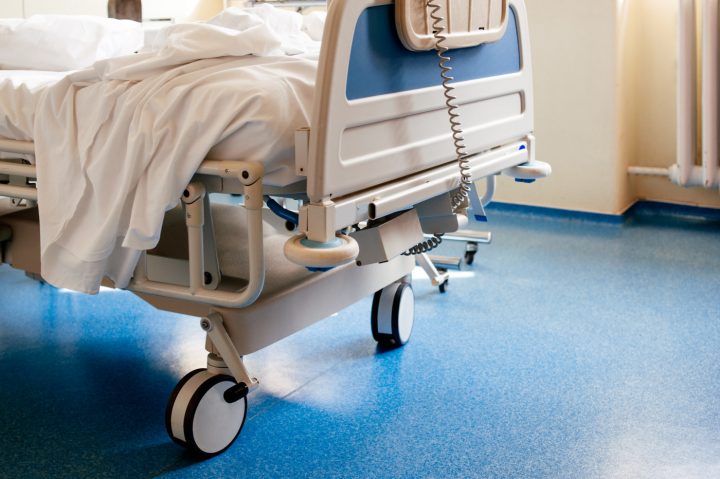The Hospital Tip That Took Me Too Long to Learn

Hadrian/Shutterstock
There I was again, speaking with hushed tones into my cellphone as I talked my husband through the tangled wires I knew he was digging into on my side of the bed.
“What else do you need, babe?” he asked patiently.
I rubbed my forehead as I peeked over at our daughter, whom we lovingly call “Ladybug.” She had finally settled in after receiving an infusion of her treatment, Berinert, and was calmly watching her favorite cartoon on the hospital TV in her room.
“My watch charger,” I replied, “my phone charger, and the charger for my computer.”
The door opened and a member of the hospital’s staff entered to attend to Ladybug. I knew they were about to ask me a series of questions that I needed to answer.
“And if you can, pack me some socks, a warm hoodie, and a few changes of clothes,” I managed to blurt out before hanging up the phone. I knew it was only a matter of time before I would get a text saying, “I’m here,” and then I’d be able to go to the lobby to receive a duffel bag from my husband and a warm hug. It had become a pattern.
By mid-2020, we had become quite familiar with our city’s pediatric hospital due to our daughter’s hereditary angioedema (HAE). And while we didn’t understand the diagnosis yet, there were a few things we had become accustomed to: She would have either unexplained swelling, usually in her face, or severe abdominal pain, which meant a trip to the ER and an eventual hospital admission. Her symptoms happened so frequently that we often joked about setting a clock by her flares.
Every time Ladybug was hospitalized, I was grossly unprepared for our stay. She wouldn’t have her favorite doll she needed to feel comfortable enough to sleep, and I wouldn’t have anything but my cellphone, which usually needed charging because I used it all day.
Enter my husband, who would swoop in like a superhero after my desperate calls for help, having packed a bag for her and me and remembering little things like stuffed animals for her and an extra blanket for me.
During one particular hospitalization, after my husband had left to take care of our three other children, I was chatting with my sister about how amazing he is.
“He’s willing to drive 30 minutes one way just to bring me all that stuff,” I bragged.
“Why don’t you already have a packed bag?” my sister asked. The question stunned me into silence. “Not to say your husband isn’t great, but why don’t you have a bag ready to go for situations like this?”
The answer was so obvious I almost slapped my forehead at the revelation.
It had never occurred to me to pre-pack a bag before the ever-looming hospitalization happened. True, there was a part of me that wanted to believe that “this was the last stay,” but it became glaringly apparent that until we understood what was going on with Ladybug, this would be our reality.
When my daughter began exhibiting HAE symptoms a few weeks later and we needed to return to the ER, I grabbed my hospital bag. It included a phone charger, a watch charger, pens, a notebook, my laptop and its charger, change for the vending machine, warm socks, a hoodie, and a few other comforts from home that would help me during our stay. I was thrilled to walk out of the house prepared.
I proudly instructed Ladybug to grab her prepared bag because we had planned for this. She couldn’t find it, and when she did, it was empty. Of course it was. She was 10 at the time.
While we didn’t execute my plan as perfectly as I thought we would, I realized that in all of the frenzy of ER visits and hospital stays, sometimes it helps to do a little preparation.
Planning for certain things doesn’t mean you lack the hope that things will get better; it just means that you may be a little prepared for the things you have to face right now.
Note: Angioedema News is strictly a news and information website about the disease. It does not provide medical advice, diagnosis, or treatment. This content is not intended to be a substitute for professional medical advice, diagnosis, or treatment. Always seek the advice of your physician or other qualified health provider with any questions you may have regarding a medical condition. Never disregard professional medical advice or delay in seeking it because of something you have read on this website. The opinions expressed in this column are not those of Angioedema News or its parent company, Bionews, and are intended to spark discussion about issues pertaining to angioedema.








Leave a comment
Fill in the required fields to post. Your email address will not be published.